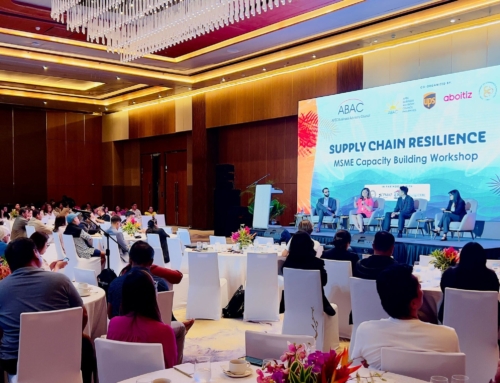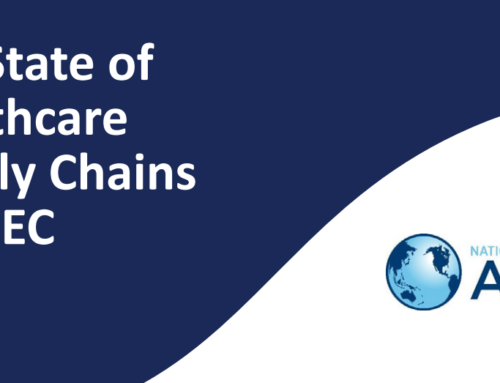Lessons learned, key strategies to strengthen resilience
NCAPEC is pleased to present “The State of APEC Supply Chains” report, launched in conjunction with the APEC Economic Leaders Week in November 2023.
This report was prepared by Access Partnership and features insights developed through extensive consultation with lead firms across APEC and analysis of publicly available trade data. It highlights four key product segments: consumer goods, consumer technology, food, and healthcare.
This report has also received outstanding contributions from UPS and Johnson & Johnson (J&J) and features insights from an exclusive survey of over 1,200 firms across 15 APEC economies to understand the current state of resilience in the four key product segments.
Read the report here.
The top 5 takeaways of the report are:
- APEC’s supply chains are long, complex, and susceptible to disruptions. Comparative advantages across the APEC’s vibrant economies have led firms to optimize their supply chains, creating greater length and complexity. Supply chains across the four key product segments vary significantly in their design and operation.
- Recent disruptions offer lessons for policymakers and businesses. Policy responses during the pandemic reveal a lack of understanding of how global supply chains are organized, what they depend on, and how distribution of key goods to communities happens. First-hand accounts of multinational corporations – the lead firms in supply chains – provide stakeholders an opportunity to learn and prepare for future crises.
- Post-pandemic, supply chains in APEC are more resilient – but they show cracks. Across five key dimensions of resilience, the business survey revealed that firms in APEC have mostly invested in greater supply chain visibility and adjusted their business models after the pandemic. The majority remain vulnerable in terms of flexibility and connectivity.
- Five strategies for APEC to strengthen supply chains. These include ensuring the flow of trade and cross-border movement are maintained during disruptions; establishing a platform for regional cooperation and future-readiness; digitizing documentation, processes and logistics services; strengthening the region’s infrastructure and transportation connectivity; and developing a framework for capacity building for micro, small, and medium-sized enterprises (MSMEs).
- Five strategies for firms to strengthen supply chains. These include measuring supply chain resilience today; diversifying products, customers, and suppliers; maintaining a “portfolio” of transportation options; creating more visibility, aligning with industry best practices; and joining industry advocacy efforts.
This report forms part of NCAPEC’s ongoing work on supply chain resilience. It follows the release of preliminary insights of this study at the 2nd ABAC Meeting in Brunei in April 2023. Additional milestones in this research include the launch of an MSME Supply Chain Resilience toolkit at the 3rd ABAC Meeting in July 2023.
Should you have any questions on this study, please contact shivin.kohli@accesspartnership.com.





